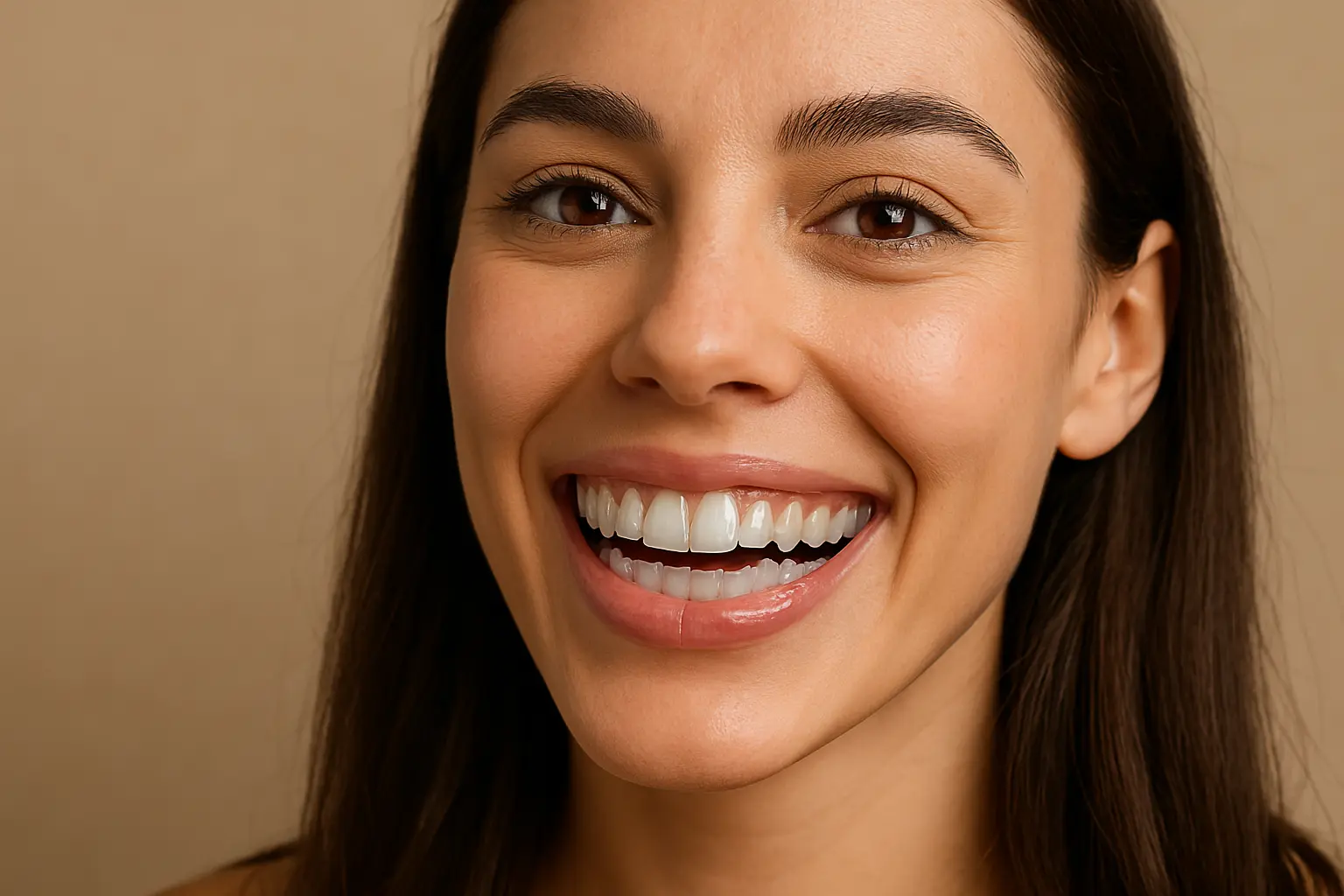Congratulations on completing your Invisalign treatment! After months of wearing aligners, you’ve finally achieved that beautifully straight smile you’ve been working towards.
However, the journey doesn’t end when you remove your last aligner. To ensure your teeth remain properly aligned for years to come, you’ll need to follow a comprehensive maintenance plan.
This article covers everything you need to know about maintaining your straight teeth after Invisalign treatment, from retainer options to proper care techniques and essential oral hygiene habits.
Understanding Post-Invisalign Retention
Why You Need to Wear Retainers
During your Invisalign treatment, your jaw bone became temporarily softer and more pliable, allowing your teeth to move into their new positions. After treatment, this bone needs time to harden again and secure your teeth in place.
Without proper retainers, your teeth will naturally try to shift back to their original positions—a process called orthodontic relapse.
Read more: Best Invisalign clinics in Singapore
Additionally, teeth naturally drift throughout our lives as part of the aging process. This means retention isn’t just a short-term consideration but a lifelong commitment if you want to maintain your results.
The Critical First Months
The risk of teeth shifting is highest during the first few months after treatment. During this period, your teeth are most vulnerable to movement, making strict adherence to your retention plan absolutely essential.
Types of Retainers After Invisalign
Several types of retainers are available to maintain your newly aligned teeth. Your dentist will recommend the best option based on your specific needs.
1. Invisalign Vivera® Retainers
What they are: Vivera® retainers are manufactured by Align Technology, the company behind Invisalign. They’re clear, removable retainers custom-made using the same advanced technology as Invisalign aligners.
Advantages:
- 30% stronger and twice as durable as standard clear retainers
- Similar appearance and feel to Invisalign aligners, making the transition easy
- Can last up to 10 years with proper care
- Cover all teeth, preventing back teeth from shifting
Recommended wear protocol:
- 22 hours per day for about three months after completing treatment
- Gradually transitioning to nighttime-only wear
- Eventually, possibly every other night (based on dentist recommendation)
2. Standard Clear Retainers (Essix)
What they are: Similar to Vivera retainers but made from different materials. After your attachments are removed, impressions of your teeth are taken to create these custom clear plastic retainers.
Read more: The Ultimate Guide to Invisalign Costs in Singapore
Advantages:
- Less expensive than Vivera retainers
- Virtually invisible
- Easy to clean
- Comfortable to wear
Disadvantages:
- May not last as long as Vivera retainers
- Can become discolored over time
3. Fixed Retainers
What they are: A thin metal wire permanently bonded to the back of your front teeth (typically from canine to canine).
Advantages:
- No need to remember to wear them
- Not visible from the front
- Can last 5-10 years with proper care
- Continuous retention without effort
Disadvantages:
- Only stabilizes front teeth, not back teeth
- More difficult to clean around
- Requires special flossing techniques (interdental brushes)
- May need occasional repairs if the wire loosens from a tooth
- Food can get trapped between the wire and teeth
4. Hawley Retainers
What they are: Traditional retainers made of acrylic and metal wire that fit the roof of your mouth or inside your lower teeth, with wire wrapping around the front of your teeth.
Advantages:
- Durable and adjustable
- Can be repaired if damaged
Disadvantages:
- More visible than clear retainers
- Some patients find them less comfortable
- Metal components may not appeal to those seeking discretion
Recommended Retention Protocol
While individual needs vary, here’s a general retention protocol most dentists recommend after Invisalign treatment:
- Immediate phase (first 3-6 months):
- Wear your removable retainer 20-22 hours per day (essentially all the time except when eating and cleaning)
- If you have a fixed retainer, you may still need a removable retainer for your back teeth
- Transitional phase (6-12 months):
- Transition to wearing your removable retainer only at night
- Long-term maintenance phase (ongoing):
- Continue nighttime wear indefinitely
- Some dentists may eventually recommend wearing retainers every other night or a few nights per week
- Always follow your dentist’s specific instructions
Caring for Your Retainers
Proper retainer care is essential to ensure they remain effective and hygienic.
For Removable Retainers:
- Daily cleaning:
- Rinse with cool water after removing (never hot water, which can warp the plastic)
- Clean gently with a soft toothbrush
- Use mild soap and water or specialized retainer cleaners (like Retainer Brite)
- Avoid toothpaste, which can be abrasive and dull the surface, making it easier for bacteria to adhere
- Storage:
- Always store in the protective case when not in your mouth
- Allow to air-dry completely before storing to prevent bacterial growth
- Keep away from heat sources that could warp the plastic
- Never wrap in tissue or napkins (a common way retainers get accidentally thrown away)
- Regular maintenance:
- Check for cracks, chips, or signs of wear
- If your retainer feels tight when you put it in after a night off, it’s a sign your teeth are trying to shift
For Fixed Retainers:
- Specialized cleaning:
- Use interdental brushes or floss threaders to clean between teeth and under the wire
- Pay extra attention during brushing to avoid plaque buildup around the wire
- Regular dental checkups:
- Have your dentist check the fixed retainer during routine appointments
- If any part of the wire comes loose, see your dentist immediately
How Long Do Retainers Last?
No retainer lasts forever. Here’s what to expect:
- Vivera® retainers: Up to 10 years with proper care
- Standard clear retainers: 1-3 years
- Fixed retainers: 5-10 years, but may need occasional repairs
- Hawley retainers: 5-8 years with good care
Factors that can reduce retainer lifespan include:
- Teeth grinding or clenching
- Poor cleaning habits
- Exposure to heat
- Normal wear and tear
What Happens If You Don’t Wear Your Retainer?
If you neglect to wear your retainer as prescribed, several consequences may follow:
- Teeth shifting: Your teeth will likely begin to shift back toward their original positions
- Need for new retainers: If your current retainer no longer fits, you’ll need new ones made
- Increased wear time: You may need to return to wearing retainers full-time to correct minor shifting
- Potential retreatment: Significant shifting might require another round of orthodontic treatment
- Bite changes: Your bite can become misaligned, potentially leading to issues with chewing or speaking
Beyond Retainers: Additional Maintenance Tips
1. Regular Dental Checkups
Schedule routine dental visits every six months to:
- Monitor your teeth alignment
- Ensure your retainers are functioning properly
- Catch any early signs of shifting
- Maintain overall oral health
2. Good Oral Hygiene Habits
- Brush at least twice a day and floss daily
- Consider using an electric toothbrush for more effective cleaning
- Maintain healthy gums, as periodontal issues can lead to tooth movement
3. Address Bad Habits
Certain habits can put pressure on your teeth and cause shifting:
- Avoid nail biting
- Don’t chew on pens, pencils, or ice
- Never use your teeth as tools to open packages
- Consider a night guard if you grind your teeth
4. Consider Dental Enhancements
After completing your Invisalign treatment, you might want to consider:
- Professional teeth whitening to enhance your smile
- Cosmetic bonding to address any small chips or imperfections
- Regular professional cleanings to maintain oral health
When to Contact Your Dentist
Reach out to your dentist immediately if:
- Your retainer breaks or becomes damaged
- You lose your retainer
- You notice your teeth beginning to shift
- The fixed retainer wire becomes loose or detached from any teeth
- Your retainer no longer fits properly
- You experience pain or discomfort
FAQs About Post-Invisalign Maintenance
Q: Will I need to wear retainers forever? A: Yes, to maintain your results long-term, you should plan to wear retainers indefinitely. While the frequency may decrease over time (from daily to a few nights a week), some level of retention is necessary to prevent shifting.
Q: Can I eat and drink with my removable retainer in? A: No, you should remove your retainer before eating or drinking anything except water. Food particles can damage the retainer and get trapped against your teeth, potentially causing decay.
Q: Is it normal for my retainer to feel tight after not wearing it for a while? A: Yes, this slight tightness indicates your teeth have started to shift. If you can still put the retainer in, wear it consistently for a few days, and it should begin to feel normal again.
Q: Will my retainer affect my speech? A: You may notice a slight lisp when you first start wearing your retainer, but this typically resolves within a few days as you adjust.
Q: Can I clean my clear retainer with toothpaste? A: No, toothpaste is abrasive and can scratch the retainer, creating places for bacteria to hide. Use mild soap or specialized retainer cleaners instead.
Conclusion
Maintaining your straight teeth after Invisalign treatment requires commitment but becomes an easy part of your routine over time. By following your dentist’s retention protocol, properly caring for your retainers, and maintaining good oral hygiene, you can enjoy your beautifully aligned smile for a lifetime.
Remember that the retention phase is just as important as the active treatment phase. You’ve invested time and resources in achieving your perfect smile—now take the necessary steps to preserve it!

